Sensors already equip a range of tools to enhance monitoring capacity for conservation. Some of the higher bandwidth technologies, like camera traps and acoustic monitoring systems, have been essential elements of the conservation toolkit for decades, and thus have enough users that we've created dedicated WILDLABS groups to address them. But a whole range of lower bandwidth sensors beyond these core technologies are being increasingly integrated into conservation monitoring systems, and offer rich new insights into the wildlife and ecosystems we're all working to protect. As with many technologies, cost and access have historically been challenges to the adoption of new sensors, but with low-cost and open-source solutions on the rise, we're excited to see what the future of this space holds.
Getting Started with Sensors:
- Watch Shah Selbe's Tech Tutors episode on scaling FieldKit, an open-source conservation sensor toolbox, from a project to a successful conservation tech product.
- Check out our Virtual Meetup about Low-Cost, Open-Source Solutions in conservation tech, including a talk by Alasdair Davies on the Arribada Initiative's work with thermal sensors in early warning systems.
- For a more in-depth introduction, watch the first video in our datalogger mini-series: Freaklabs: How do I get started with Arduino?
In this group, you'll meet others who are using and innovating diverse sensors in their work, discuss ways to make sensors more effective & accessible for conservationists, learn about what sensors are already helping us accomplish in the field, and have the opportunity to ask and answer questions. Join this group to get started!
Header image: Emma Vogel, University of Tromsø
DIY electronics for behavioral field biology



- 6 Resources
- 78 Discussions
- 4 Groups
- @tkswanson
- | she/her
San Diego Zoo Wildlife Alliance
Research Coordinator II for the Conservation Technology Lab at SDZWA

- 2 Resources
- 2 Discussions
- 7 Groups
WILDLABS & Fauna & Flora
I'm the Platform and Community Support Project Officer at WILDLABS! Speak to me if you have any inquiries about using the WILDLABS Platform or AI for Conservation: Office Hours.



- 26 Resources
- 41 Discussions
- 6 Groups
- @TaliaSpeaker
- | She/her
WILDLABS & World Wide Fund for Nature/ World Wildlife Fund (WWF)
I'm the WILDLABS Research Specialist at WWF-US



- 23 Resources
- 62 Discussions
- 25 Groups
- @davidhunter
- | he/him
University of Colorado Boulder
PhD student exploring design and technology to connect people with nature and the environment



- 0 Resources
- 22 Discussions
- 5 Groups
WILDLABS & Wildlife Conservation Society (WCS)
I'm the Bioacoustics Research Analyst at WILDLABS. I'm a marine biologist with particular interest in the acoustics behavior of cetaceans. I'm also a backend web developer, hoping to use technology to improve wildlife conservation efforts.





- 27 Resources
- 34 Discussions
- 34 Groups
Worked as a mechanical engineer for a defence co, then software engineer, then for a research lab specialising in underwater robotics.



- 1 Resources
- 144 Discussions
- 16 Groups
Sustainability Manager for CERES Tag LTD. An animal health company; animal monitoring, conservation, & anti-poaching/ rural crime. Wildlife, livestock, equine & companion. #CeresTrace #CeresWild #CeresRanch





- 2 Resources
- 20 Discussions
- 24 Groups
- @carlybatist
- | she/her
ecoacoustics, biodiversity monitoring, nature tech



- 111 Resources
- 356 Discussions
- 19 Groups
Movement ecologist using conservation technology to study the behaviors of animals in the wild and understand how they cope with change to most effectively address conservation- and conflict-related issues.


- 0 Resources
- 9 Discussions
- 11 Groups
Senior Wildlife Research Scientist
- 0 Resources
- 0 Discussions
- 7 Groups
Cardiff University
- 0 Resources
- 0 Discussions
- 3 Groups
The Zoological Society of London, with the support of WILDLABS and the UK Space Agency, are proud to publish this new guide to satellite technologies for tracking wildlife.
17 February 2023
A pilot program in Oregon’s Willamette Valley will test how well artificial intelligence-enabled sensors can identify and characterize wildfires, which will help with responder resource allocation and boost community...
15 February 2023
Technology to End the Sixth Mass Extinction. Salary: $104k-144K; Location: Washington DC or Seattle WA, potential hybrid; 5+ years of Full stack development experience; Deadline March 15th - view post for full job...
10 February 2023
Frontiers in Conservation Science is calling for submissions for a Research Topic that aims at examining the paradoxical relationship that has been established in recent years between the flagships of new technology...
10 February 2023
Are you excited by the potential for new technologies to help monitor the natural world? Do you enjoy communicating your passion for technology and nature with diverse audiences? We are seeking an enthusiastic...
2 February 2023
Consultancy opportunity at ZSL for an experienced monitoring specialist to support species monitoring in rewilding landscapes across Europe
31 January 2023
Sending real-time alerts from ecological sensors such as camera traps in areas with poor data connectivity is complex and involves integrating a large number of potentially complex hardware and software components. Our...
13 January 2023
The authors "tested the use of a thermal imager to assess the occupancy of enclosed nests, using nest-box populations of small passerines. Based on a thermal image of each nest box, observers were able to predict nest-...
13 January 2023
WILDLABS and Fauna & Flora International are seeking an early career Vietnamese conservationist for 12-month paid internship position to grow and support the Southeast Asia regional community in our global...
11 January 2023
As the FieldKit hardware ecosystem grows, Conservify is seeking a Junior Electrical Engineer to assist with testing, troubleshooting, prototype development, and developing production test fixtures for our growing...
9 December 2022
Careers
Conservify is seeking a hands-on Senior Software Engineer with front end and back end experience developing rich web and mobile applications, and a strong desire to build a best-in-class product that stands out in both...
9 December 2022
Conservify is seeking a hands-on Senior Product and Production Manager with strong interpersonal and organizational skills to remotely lead a small seasoned team of thinkers, designers and engineers who are shaping the...
9 December 2022
January 2025
event
16 Products
Recently updated products
117 Products
1 R&D Projects
81 Organisations
Recently updated products
Recently updated R&D Projects
Recently updated organisations
| Description | Activity | Replies | Groups | Updated |
|---|---|---|---|---|
| Thanks Phil - I have e-mailed you.Peter |
|
Animal Movement, Sensors | 3 weeks ago | |
| One of our goals with explorer.land is to bridge satellite data and on-the-ground perspectives — helping teams combine field updates,... |
|
AI for Conservation, Geospatial, Open Source Solutions, Sensors | 1 month ago | |
| True, the US ecosystem is a challenging space right now, for basically all sectors. We should not let the US chaos prevent us from engaging with opportunities in other... |
|
AI for Conservation, Camera Traps, Connectivity, Drones, Emerging Tech, Ethics of Conservation Tech, Marine Conservation, Sensors | 1 month ago | |
| Hi WILDLABS Community,I’m Simon Juma from Kenya, working on a project to track and manage Red-billed Quelea birds, which... |
|
AI for Conservation, Sensors | 2 months ago | |
| Thank you! I will follow up by email. |
+8
|
Animal Movement, Conservation Dogs, East Africa Community, Geospatial, Sensors, Women in Conservation Tech Programme (WiCT) | 2 months 1 week ago | |
| Thanks Jack, that's an interesting repo. |
|
Sensors | 2 months 2 weeks ago | |
| Sure, Akio! Happy to answer!1. Yes, something like that. The few existing i guess applied already for GPS collar (literally collar) that usually for big cats and some other big... |
|
Sensors, Animal Movement, Open Source Solutions | 2 months 2 weeks ago | |
| How much does it cost to incorporate machine learning into your conservation drone geospatial analysis? How does it speed up your workflow... |
|
Conservation Tech Training and Education, Drones, Geospatial, Open Source Solutions, Sensors, Software Development | 2 months 3 weeks ago | |
| Thanks so much for all the advice!! This seems very achievable. We don't mind having the fibre optic fixed in place as we planned to have a shorter one specifically for this... |
|
Sensors, Marine Conservation | 2 months 3 weeks ago | |
| Hi Dan, Not right now but I can envision many uses. A key problem in RS is data streams for validation and training of ML models, its really not yet a solved problem. Any... |
|
Emerging Tech, AI for Conservation, Animal Movement, Build Your Own Data Logger Community, Camera Traps, Connectivity, Conservation Tech Training and Education, Data management and processing tools, Geospatial, Sensors | 3 months ago | |
| @Eric24 The use case is as I wrote to Patrick: "a parent unit in the centre of a conservation area which is to recieve one way packets from child sensor units spread around the... |
|
Sensors | 3 months 1 week ago | |
| Hi Lucille,Thank you for your reply! We’d be really interested in learning more about your developments. We’ll contact you soon to arrange a discussion.Thank you.Best regards,... |
|
Acoustics, AI for Conservation, Sensors | 3 months 1 week ago |
Detecting animals' heading and body orientation
2 April 2025 10:53am
25 April 2025 10:50am
Hi Peter, Just tell me exactly what you are looking for. I have commissioned these collars from the engineer who originally made my Virtual Fence back in 2016 (still working). The aim is to have a long life while also taking regular readings (5 - 10min) so that animals cannot invade croplands or villages without being detected before they can be do any damage. We have tried to include all possible features that will be useful, while still maintaining low weight and simplicity. Hence no solar and external antennae outside the housing.
Cheers, Phil
1 May 2025 8:50am
Thanks Phil - I have e-mailed you.
Peter
Ground Truth: How Are You Verifying What Maps Show?
 Léa Smadja
and 1 more
Léa Smadja
and 1 more
16 April 2025 3:35pm
Dual-/Multi-Use Technology Strategies
1 April 2025 11:46pm
15 April 2025 6:17pm
That is a great point and the current international trade climate has been making supply chain even more difficult. This also deeply affects US companies given much of the US goods manufacturing and assembly happening in China. Over the last few years, I have been seeing US hardware companies (e.g. drone platform and component OEMs) sourcing their goods from India, Turkey, Canada, and more recently in African and South American nations. Because of the last 3-to-5 years of increasingly restrictive and costly international hardware trade, there has been a emergence of specialized component manufacturers internationally. For European companies interested in providing hardware services to the US, I would suggest diversifying the supply chain beyond China. Given the current climate and trends, that added supply chain resilience may be a good idea, regardless of work with the US.
15 April 2025 7:36pm
This is more than the supply chain though. The point was the company itself cannot use any tech for anything from the 5x companies. So in my case my ISP is incompatible. Essentially I see the only companies making that kind of sacrifice are ones that want to devote themselves to defence only.
Of course. That’s US defense as a customer. European defence is fully on the table.
It’s just sad that it’s not restricted to defence. US government wildlife organisations cannot buy European tech unless that European company was pure in their eyes.
15 April 2025 8:37pm
True, the US ecosystem is a challenging space right now, for basically all sectors.
We should not let the US chaos prevent us from engaging with opportunities in other nations' multi-use markets. A company's ability and journey to tap into other markets is very unique to them (product, team, finances, infrastructure, agility), and some simply cannot adapt. There is no one size fits all (or even most) solution when it comes to multi-use strategies. It is important that we are systematic about evaluating the cost to adapt our product-service to a different market, and the value of new opportunities in that new market, without losing track of underlying conservation and social good needs.
PhD position on bat acoustics and collective behavior
28 March 2025 1:05pm
Seeking Ornithologist Expertise on Quelea Bird Behavior
18 March 2025 6:20pm
Drone Photogrammetry & GIS Introduction (Foundation) Course
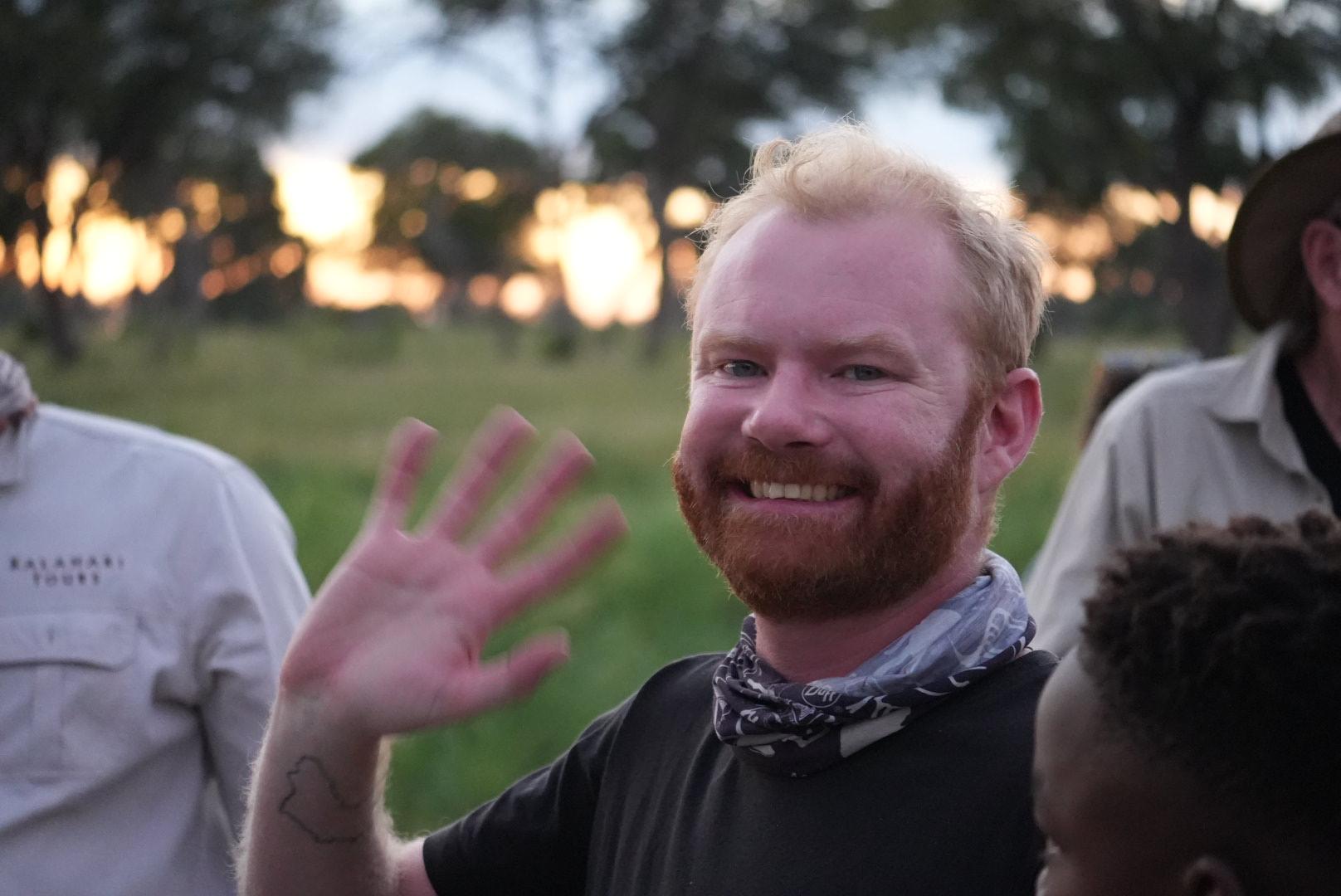 Sean Hill
and 1 more
Sean Hill
and 1 more
18 March 2025 12:47pm
GPS collars for domestic dogs
20 January 2025 3:26am
20 February 2025 8:46pm
What are your parameters? Do you need yes no movement, which could be collected with an accelerometer and no lat-long data?
Movement on an XY grid once an hour within a tightly bounded area?
High resolution once per second data? Large geographic area?
Different technologies deliver ddifferent datasets. Sometimes, significantly!
10 March 2025 11:37am
Hi Stephanie, at https://Savannahtracking.com we develop and manufacture a variety of collars with sizes ranging from about 95 grams for Raptors, 200grams - 1200g for mammals, and collars for large mammals such as Elephants. We currently have collars deployed on Dingoes which are about the same size as domestic dogs, and I believe that a similar solution will be perfect for your needs.
Our GPS collars can be programmed to collect high resolution data (15-minute gps positions) with hourly uploads via iridium satellite to our server where you can view and download the data from our dedicated windows or MAC SDM platforms. We also have a view only android/ios app. All our collars have two-way satellite communication, Internet based downloading via the free accompanying Savannah Tracking data manager software, automated Google Earth links for visualization, fully user definable geo fencing allowing for point, line and polygon fences and automated app and mail alarms in case of zone violation.
Kindly reach out to us and we can discuss a bespoke solution for your tracking needs at info@savannahtracking.com
11 March 2025 3:31am
Thank you! I will follow up by email.
LiDAR for Wildlife Size Measurement
19 February 2025 11:10pm
28 February 2025 7:06pm
That’s pretty cool. It took me a while to realise that you were referring to a software package. So for others like me, here’s a link
4 March 2025 3:50am
Thanks Kim, yes we're aware that PIR has many pitfalls, especially when it comes to small things far away, which is often the case for us. But we can accept missing some detections for indexing purposes if we win in other areas like battery life, size or affordability. We're currently able to detect small birds from a useful distance with Browning trail cameras.
If I do dust off my soldering iron & actually make something it will be on a scale of 1, for dataset building proof of concept stage, not for large scale use. It would likely include a variety of sensors so I can make meaningful comparisons & propose a sensible combination. The detection part could be as simple as pixel subtraction from video footage I imagine.
4 March 2025 3:51am
Thanks Jack, that's an interesting repo.
GPS Tracker For Wildlife
27 February 2025 12:13pm
2 March 2025 11:34am
Thank you for this valuable information!
Some of the features you mentioned can be quickly added to Loko, while others require more consideration. Loko’s communication is one-way—meaning the transmitter doesn’t know whether the receiver has received the data. This design choice is made to conserve battery life. However, all data is logged internally and can be accessed via USB.
I will add GeoTIFF loading to the Loko App. Currently, Loko is not suitable for wildlife tracking because it is not waterproof, but I am working on improving its mechanical design.
Loko already supports multiple connections, allowing many transmitters to connect to a single receiver or/and multiple receivers.
Regarding encryption: What do you mean by "Encryption should not be optional"?
Are you suggesting that communication should always be encrypted by default? on loko I made it user-configurable because encrypted data packets are 32 bytes, whereas unencrypted ones are 18 bytes. A smaller data packet improves reception sensitivity and extends the transmission range.
In your opinion, what would be a reasonable price for such a device? This is very important when adding new hardware features.
Cheers,
Akio)
2 March 2025 11:42am
Hi Herhanu , appreciate for your valuable feedbacks.
- can you explain what type of release mechanisim do you mean , picture will be much helpfull . do you mean with a remote release mechanisim activates and release the tracker from crocodile collar?
- how far data need to be sent ? with a mesh network of Loko receivers wide range of area can be covered i guess.
- long distance transmission is very challanging when transmitter is very close the ground , on crocodiles especially.
for what purpose do would you use accelerometer data? is there any specific use case?
Cheers, )
2 March 2025 11:55pm
Sure, Akio! Happy to answer!
1. Yes, something like that. The few existing i guess applied already for GPS collar (literally collar) that usually for big cats and some other big mammals. There is also GPS tag for Cetaceans that can pop up, but its only remained with the animals several days CMIIW (eg see links below)
link 1
2. I guess it depends on your research questions or project objectives. But for crocodile they can have vast home range from 100 ha to 10,000 ha (depends on species). For my species, it at least uses 500 ha of area, and the farthest between points can be 15km apart.
3. accelerometer, especially in crocodile can give insight about their movement ability. As they can random as they can be - or being a statue for hours (like when you look at crocs in the zoo). Of course this would depends on your objectives.
Hope this helps!
Cheers~
How much does it cost to incorporate Machine Learning into your drone GIS analysis process?
28 February 2025 8:44am
Custom underwater case for spectrometer
17 February 2025 7:51pm
19 February 2025 10:44am
Hi Connie. You could check out Blue Robotics (bluerobotics.com) - they seem to have some options for underwater housings and cable connectors. I haven’t personally tried any, but they might be worth a look. Good luck with your project!
26 February 2025 5:09am
If you don't mind sacrificing the fiber optic cable, you could pretty much take any submersible housing (rubber coat 3D print or alike) and utilize a potted penetrator. Using something like 3M™ Scotchcast™ Potting Kit 2136 or a simple marine grade epoxy from the hardware store should work. You could even put a polycarbonate window to see inside the housing. But this is all relative to how long you want to submerge the instrument for and how reliable you want the housing to work.
For a cable like that, I would drill a hole into your underwater housing a little larger than your cable. Take a 2cm PVC pipe which is a bit larger than your hole and hotglue it onto the housing making a seal for you to fill with epoxy. Place another 1cm PVC pipe inside the housing on the other side of your hole inside the housing. Place the cable through and pour in the epoxy. You may have to force it into the PVC with some Q tips and make sure to get all the bubbles out. A simple trick is to put it under a vacuum if you are able or a less effective option is to place it on a shaker table for a few minutes. It can be a little messy. Note: the key for any penetrator is to not place strain on your cables.
Otherwise, I would suggest looking at Sexton Underwater Housing Corporation if you're looking for something custom that fits your needs. We have a few fiber optic connections on our things from them. The underwater box from bluerobotics may be helpful, but you do run into your penetrator issue and you can't see into the box. Other note when housing expensive equipment: ALWAYS have a place to vacuum test your underwater housing. This will ensure you don't have any small leaks before deployment. I'd skip bluerobotics vacuum handpump (I'd look around for a less expensive option bc it will break and they're cheaper elsewhere). I spent probably a couple days finding out that there wasn't a leak in the housing but the hand pump itself. You can get the vent plug and vacuum plug from blue and then just get a small electric pump (Diaphragm Vacuum Pump, Compact Oil-free Vacuum Pump Pressure Pump) with a gauge to save your hands and time.
27 February 2025 10:33am
Thanks so much for all the advice!! This seems very achievable. We don't mind having the fibre optic fixed in place as we planned to have a shorter one specifically for this project. Im currently waiting to hear back from Sexton but if not, we will try DIY something based on your suggestions
The 100KB Challenge!
7 February 2025 11:47am
20 February 2025 9:13am
Nice one - what kind of thing would you use this for?
~500mA peak current, it has a similar power profile as the current RockBLOCK product, in that it needs lots of juice for a for a small period of time (to undertake the transmission) we include onboard circuitry to help smooth this over. I'll be able to share more details on this once the product is officially launched!
20 February 2025 9:13am
~500mA peak current, it has a similar power profile as the current RockBLOCK product, in that it needs lots of juice for a for a small period of time (to undertake the transmission) we include onboard circuitry to help smooth this over. I'll be able to share more details on this once the product is officially launched!
20 February 2025 9:31am
Hi Dan,
Not right now but I can envision many uses. A key problem in RS is data streams for validation and training of ML models, its really not yet a solved problem. Any kind of system that is about deploying and "forgetting" as it collects data and streams it is a good opportunity.
If you want we can have a talk so you tell me about what you developed and I'll see if it fits future projects.
All the best
Using LoRa for a sensor network: recommendations
5 February 2025 6:06pm
11 February 2025 12:22pm
@pchwalek Thank you for the response! The project which I am currently developing is exactly as you mentioned in the LoRa use case: a parent unit in the centre of a conservation area which is to recieve one way packets from child sensor units spread around the perimeter of the protected area. The difference in LoRa vs LoRaWAN is much more clear to me now, and I'll try me path with LoRa based on the feedback :)).
If you happen to have resources to recommend in terms of developing and using LoRa, I'd be glad to have your recommended references as a starting point.
Best regards,
Kristián
11 February 2025 11:59pm
@kristian.cuervo happy to help. Make sure to take note of @Eric24's comment about potential packet losses. Having LoRaWAN could make that problem a bit nicer, although I don't have enough experience with error detection via LoRaWAN, but you can also just retransmit packets manually via LoRa or if you have the power and bandwidth budget, just retransmit redundant packeted.
As for resources, I would just Google it but starting with one of the LoRa boards from SparkFun/Adafruit or equivalent is recommended.
12 February 2025 8:53am
@Eric24 The use case is as I wrote to Patrick: "a parent unit in the centre of a conservation area which is to recieve one way packets from child sensor units spread around the perimeter of the protected area.". The packets are simple pings on whether the sensor wants to send an alarm to the rangers in the conservation area and a percentage accuracy that e.g a poacher is detected on the perimeter.
The delivery guarantee requirement is thus very high, but it is not necessary to send signals often if an event is not occuring (which should not be more frequent than once a day at max). Perhaps the delivery guarantee could be fixed by simply sending an alarm signal many times? Furthermore, it is not foreseen that the sensors need to be dynamically reconfigured.
Thank you for the response and insight in your development process! I'm planning to use very similar modules as you described.
Tropical fieldwork funding! Up to $15,000 -Susan Wojcicki Fellowship
10 February 2025 7:01pm
Low-power acoustics systems
27 January 2025 1:44pm
10 February 2025 10:42am
10 February 2025 10:49am
Hi Julia,
Thank you for your reply. Your work on connected acoustic recorders sounds very interesting, and we’d love to learn more about your application and the enhancements to Bugg. We’ll contact you soon to arrange a discussion.
Looking forward to it!
Thank you,
Best regards,
Sebastian
10 February 2025 10:52am
Hi Lucille,
Thank you for your reply! We’d be really interested in learning more about your developments. We’ll contact you soon to arrange a discussion.
Thank you.
Best regards,
Sebastian
acoupi: An Open-Source Python Framework for Deploying Bioacoustic AI Models on Edge Devices
7 February 2025 1:39am
Implanted biologgers with remote data access
6 February 2025 10:57am
6 February 2025 6:33pm
Hi @Ebennitt, we do have a working solution that works with all our OpenCollar devices. We connect to sub skin implants and then send and store those readings using Bluetooth, LoRaWAN and/or Iridium satellite. We can have a quick online meeting if you like to show this. Works great!
SDZWA Conservation Tech Summer Fellowship
5 February 2025 9:09pm
What Are Innovative Technologies, and Why Should Conservationists Care?
28 January 2025 3:38pm
INSTANT DETECT 2.0 - ALPHA TESTING
28 January 2025 3:18pm
INSTANT DETECT 2.0 – THE OPTIMISATION YEARS
21 January 2025 11:46am
Can/Should UAVs Be The Answer To Urbanisation & Wildlife Conflicts
20 January 2025 11:00am
Thesis Collaboration
4 January 2025 5:15pm
7 January 2025 12:32pm
Hi Simon,
Did you already contact INBO? Both biologging and citizen science are big themes at INBO. Last year we had a master thesis on camera trapping invasive muntjac. You can send me a private message for more info!
14 January 2025 3:30pm
Hi Simon,
We're a biologging start-up based in Antwerp and are definitely open to collaborate if you're interested. We've got some programs going on with local zoo's. Feel free to send me a DM if you'd like to know more.
15 January 2025 8:30am
Hi Simon,
We (Reneco International Wildlife Consultants) have an ongoing collaboration with a local University (Abu Dhabi, UAE) for developing AI tools (cameratrap/drone images and video analyses) and biomimetic robots applied to conservation (e.g https://www.sciencedirect.com/science/article/pii/S1574954124004813 ). We also have a genetic team working on eDNA. Field experience could be possible, in UAE or Morocco.
Feel free to write me back if you may be interested and would like to know more
Webinar: Drone-based VHF tracking for Wildlife Research and Management
9 January 2025 11:45pm
Video evidence for the evaluation of behavioral state predictions
17 December 2024 11:02am
19 December 2024 11:53am
Currently, the main focus is visual footage as we don't render audio data in the same way as we do for acceleration (also: the highly different frequencies can be hard to show sensibly side by side).
But In this sense, yes, the new module features 'quick adjust knobs' for time shifts: you can roll-over a timestamp and use a combination of shift/control and mouse-wheel to adjust the offset of the video by 1/10/60 seconds or simply enter the target timestamp manually down to the millisecond level. This work can then and also be saved in a custom mapping file to continue synchronisation work later on.
19 December 2024 12:59pm
but no "time scaling" adjustments to adjust a too "slow" or too "fast" video ?
19 December 2024 4:07pm
No, not yet. The player we attached does support slower/faster replay up to a certain precision, but I'm not sure that this will be sufficiently precise for the kind of offsets we are talking about. Adding an option on the frontend to adjust this is quite easy, but understanding the impact of this on internal timestamp handling will add a level of complexity that we need to experiment with first.
As you said, for a reliable estimate on this kind of drift we need at least 2 distinct synchronized markers with sufficient distance to each other, e.g. a precise start timestamp and some recognizable point event later on.
I perfectly agree that providing an easy-to-use solution does make perfect sense. We'll definitely see into this.
Sensors and data sharing for small autonomous boat (Brave Puffin)
18 December 2024 1:53pm
Birdweather Puc use as a passive sensor
13 December 2024 6:46am
13 December 2024 3:07pm
Checking the Birdweather FAQ, I guess you need to be more detailed on the setup description. For example, if you use a powerbank to power the PUC that is NOT ALWAYS-ON, it may swich-off after some time. So details of your setup may matter.
Caveat, I do not have a PUC, but tried to understand you problem.
18 December 2024 1:03pm
Thanks for the advice Wade!
It will be great to hear Tim's feedback, but thanks for your advice! I think Lithium batteries are the next step for us. I have successfully gotten it working with a power bank attached, but that really impedes its portability. Will also fiddle around with the GPS per your recommendations...
18 December 2024 1:10pm
Hello Walter
Thanks for your input. I have achieved better results with the puc when hooking it up to a powerbank. Have got them set up to "recording only", and GPS to low power mode. Looking to now try eliminating the need for a power bank as that impairs the portability of the puc.
Detecting Thrips and Larger Insects Together
16 December 2024 1:14pm
16 December 2024 2:32pm
16 December 2024 2:36pm
Yeah, I would expect that you might need to have higher resolution if the critters are very small. Still might be just a lens choice. But not up on this amount of lens difference, so don't know how hard it would be.
16 December 2024 2:48pm
So, updated the text a bit with images cropped at 100% zoom :) we are already happy with the time reductions we got, but... would like to get at least 90% time reduction instead of 70% :))) we know that with a very expensive and high power camera we could probably do it, so one approach we are thinking of is just taking a closer macro picture with a cellphone of let's say 1/3 or 1/4 of the sticky paper and use this data instead of everything... or take 2-3 pictures (but we don't want to waste time in sticking the images together).














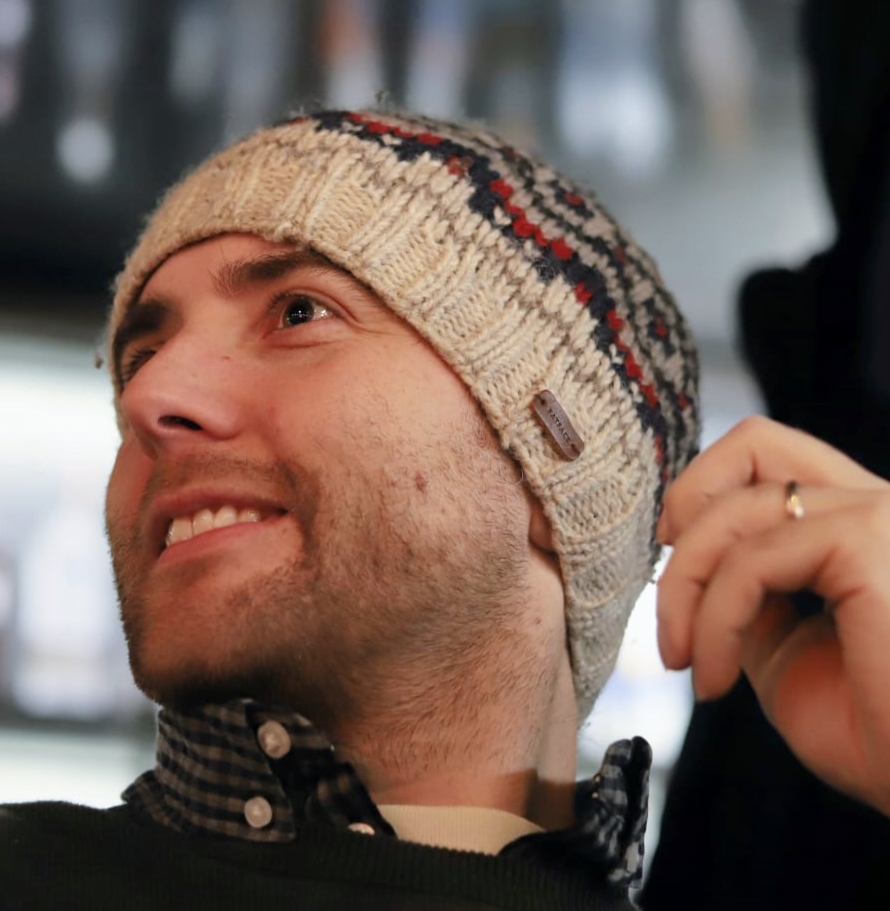

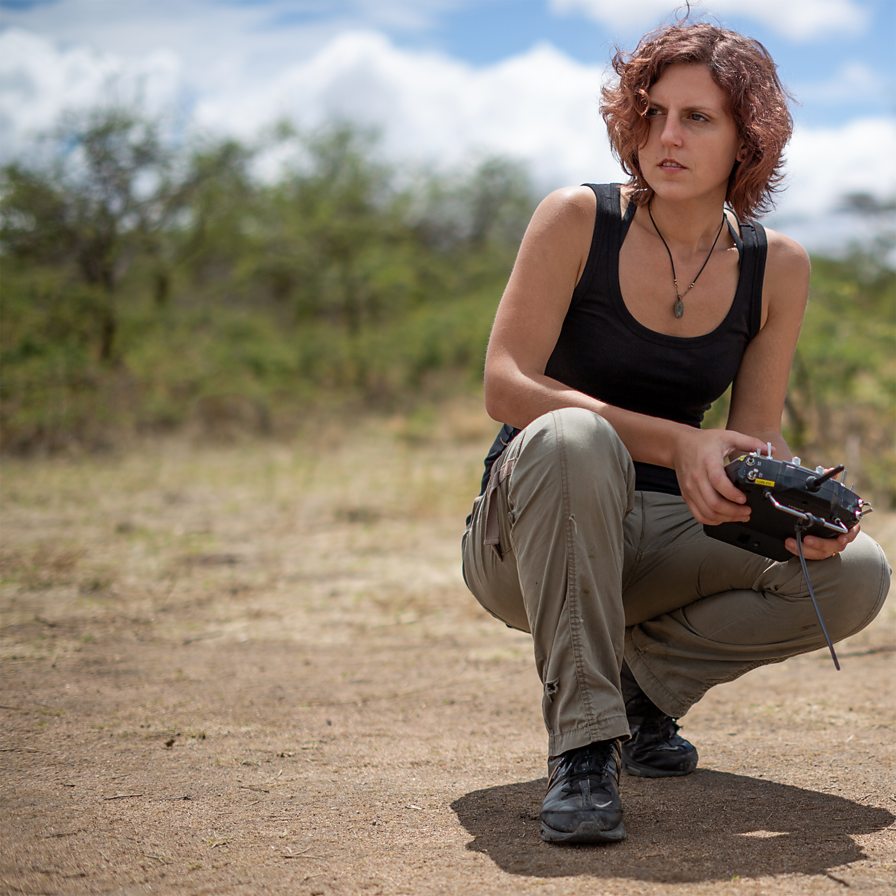
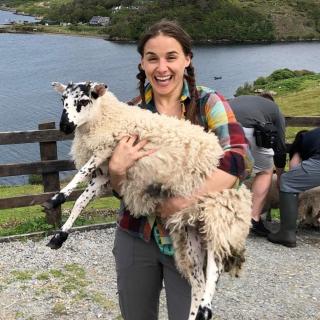
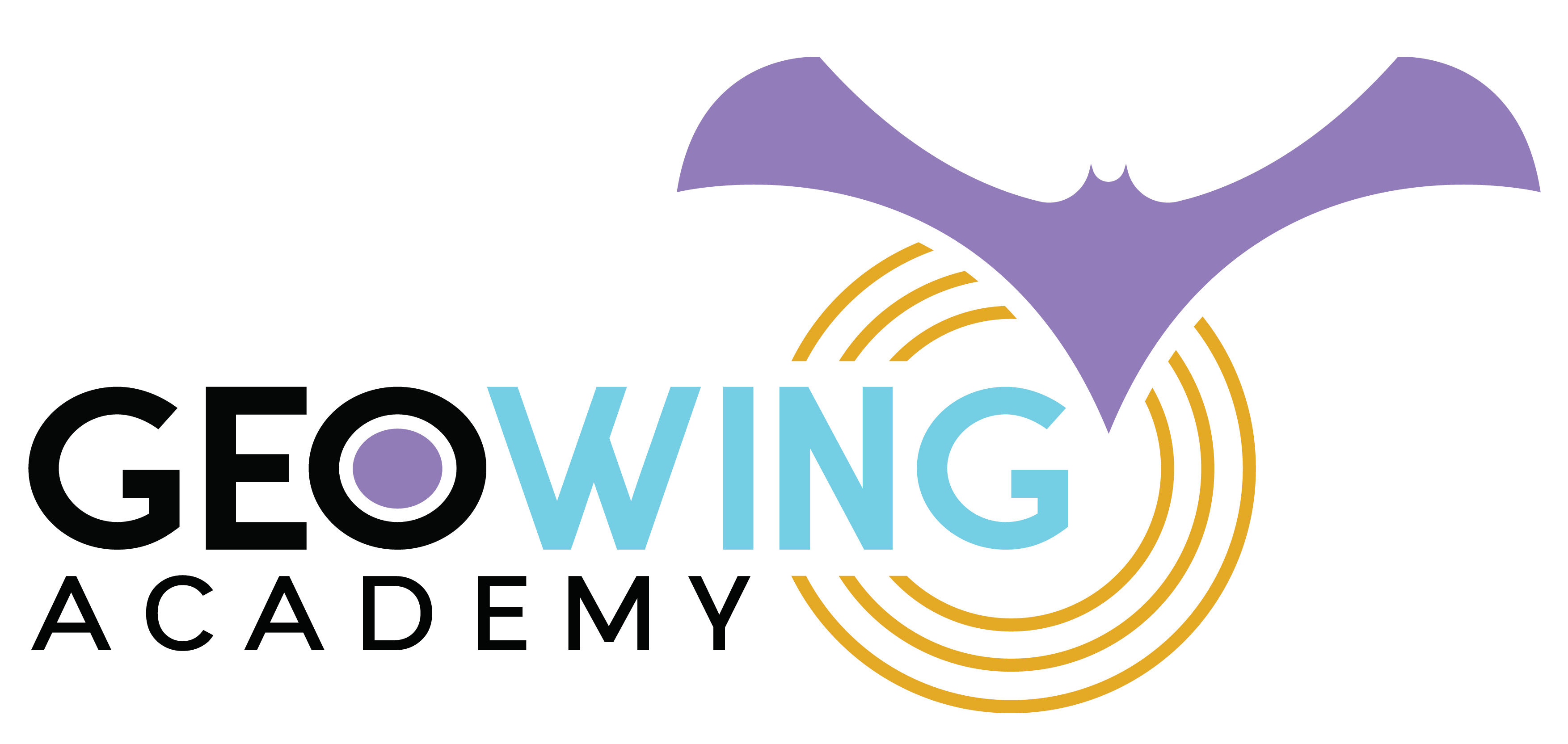

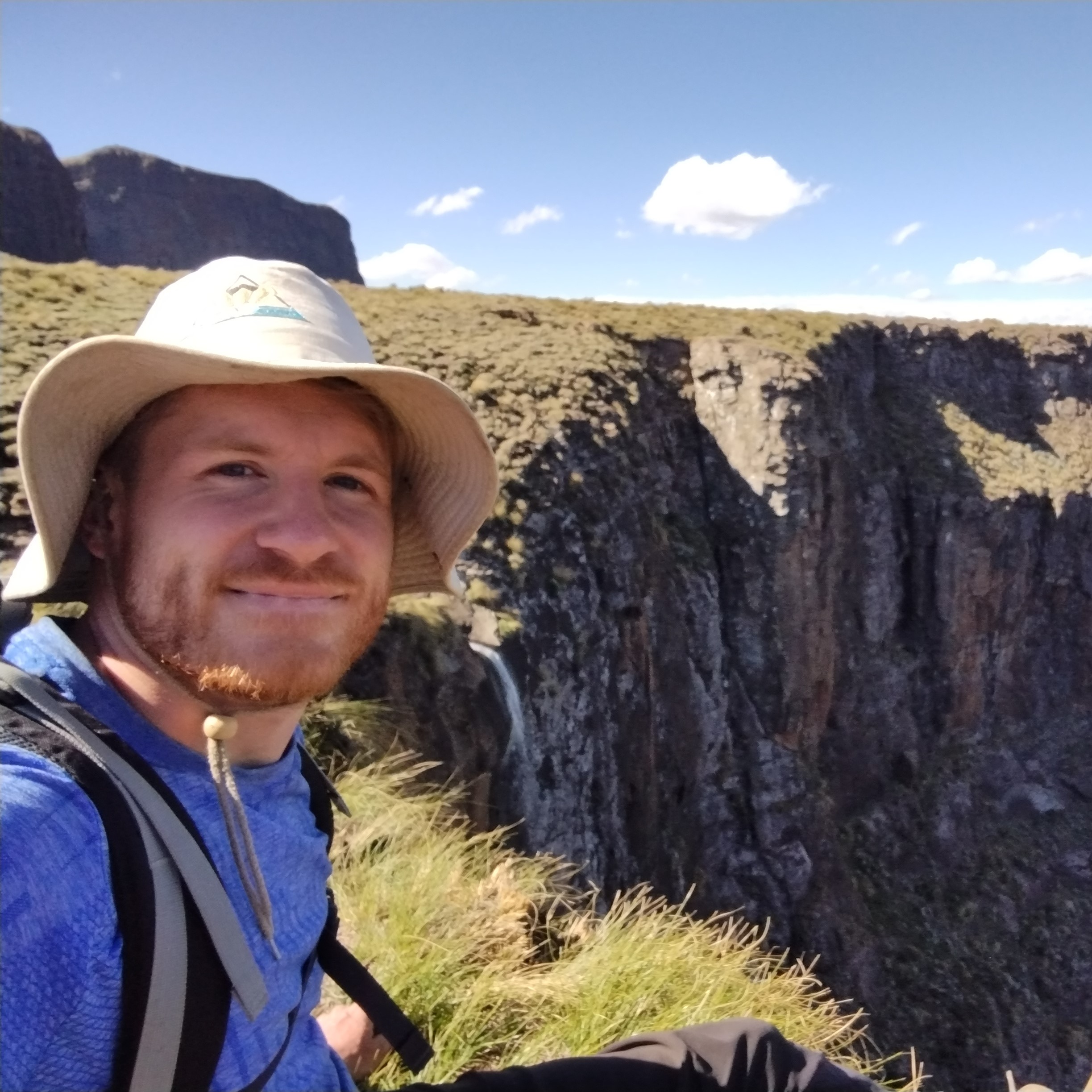

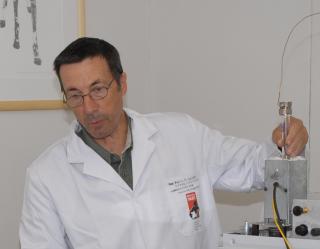







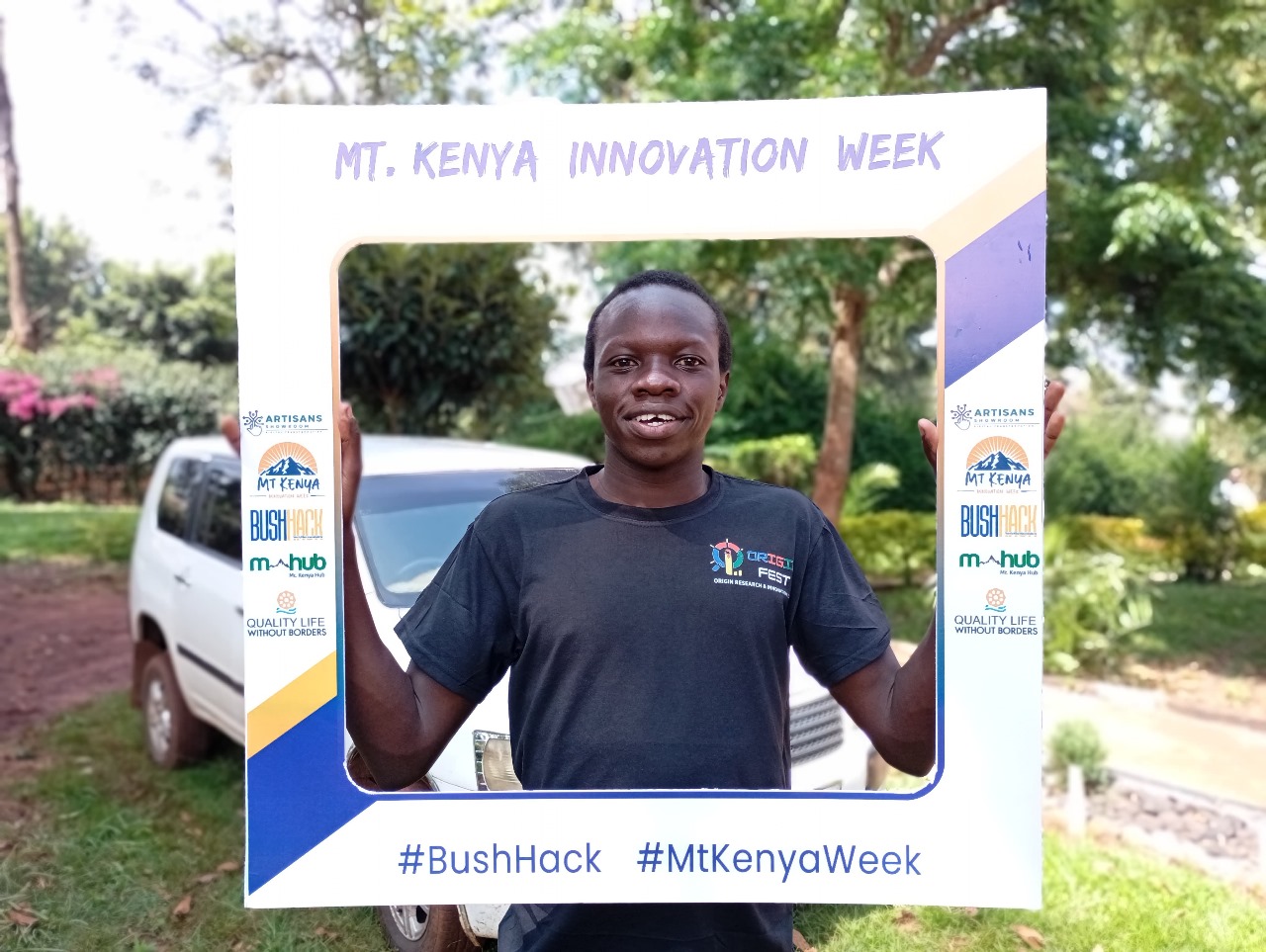
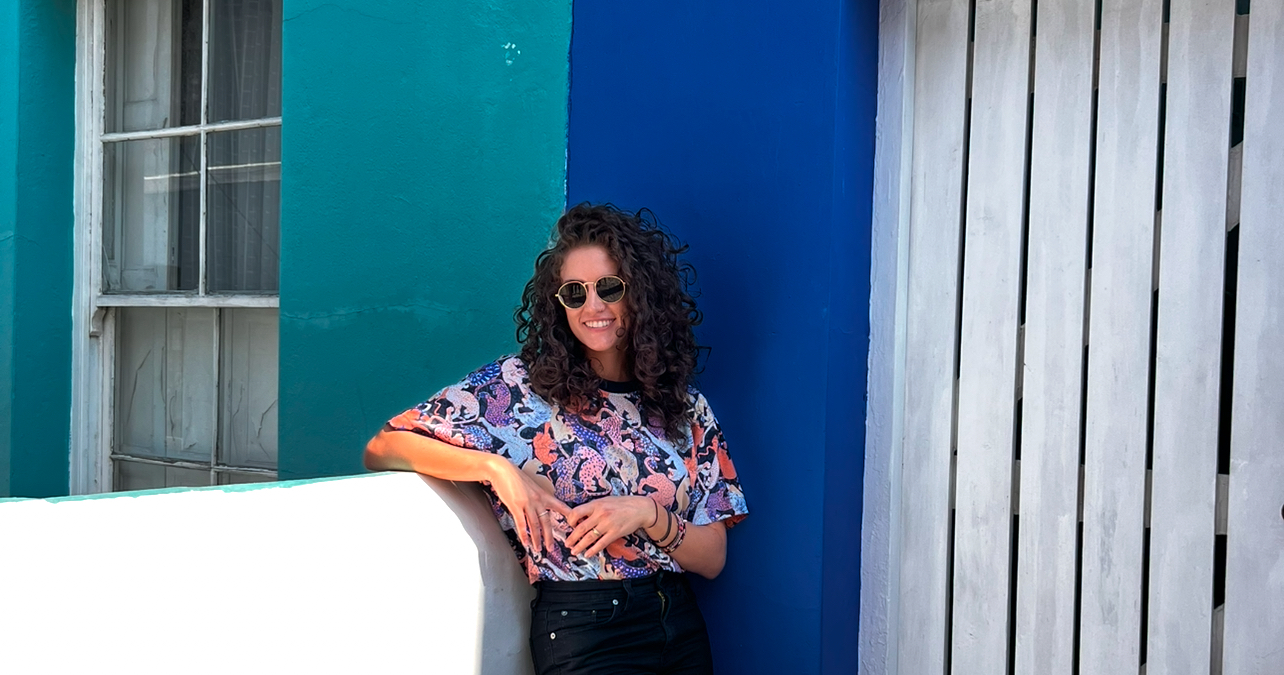






















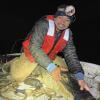


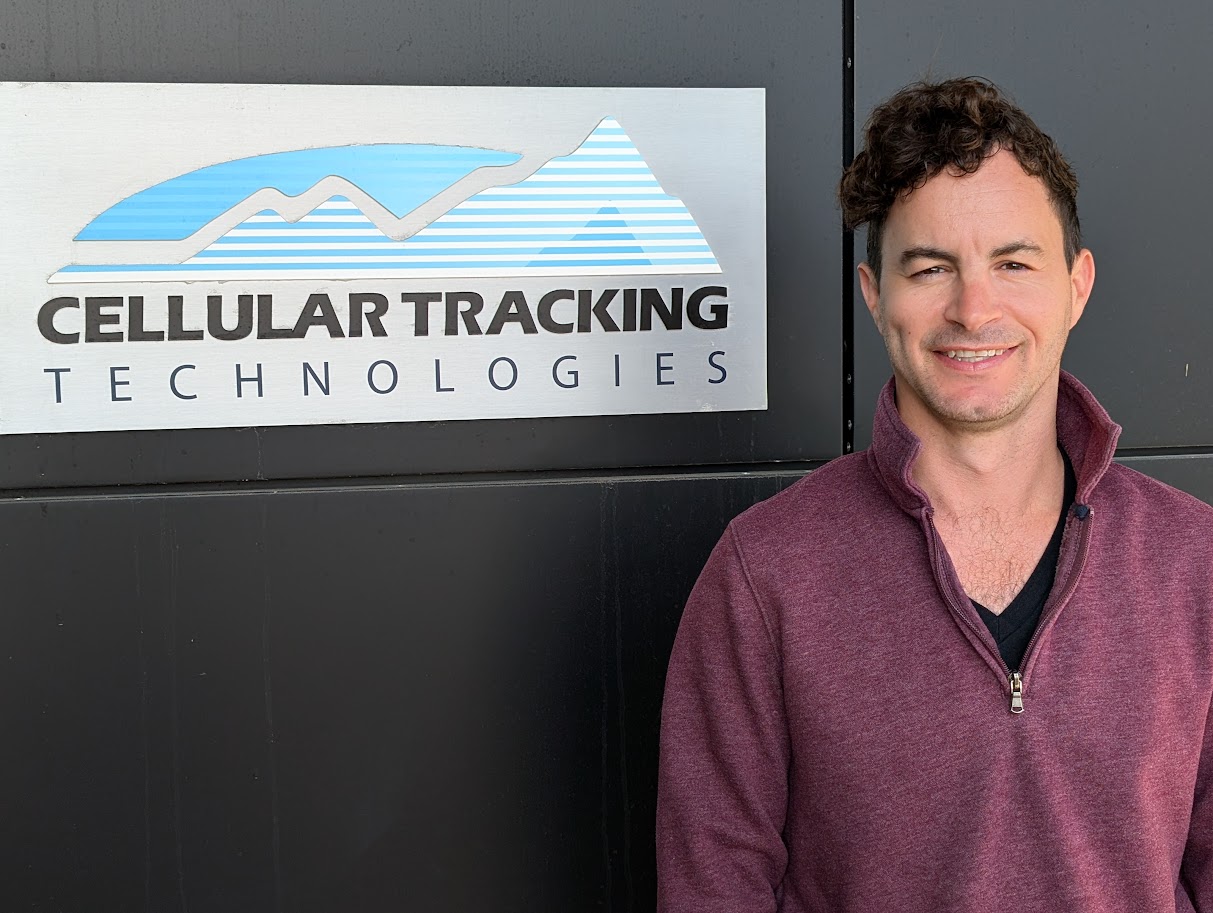

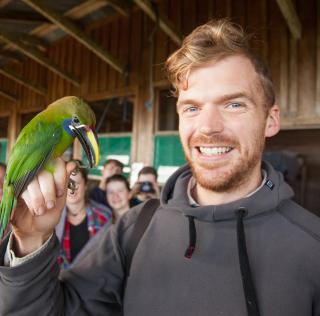


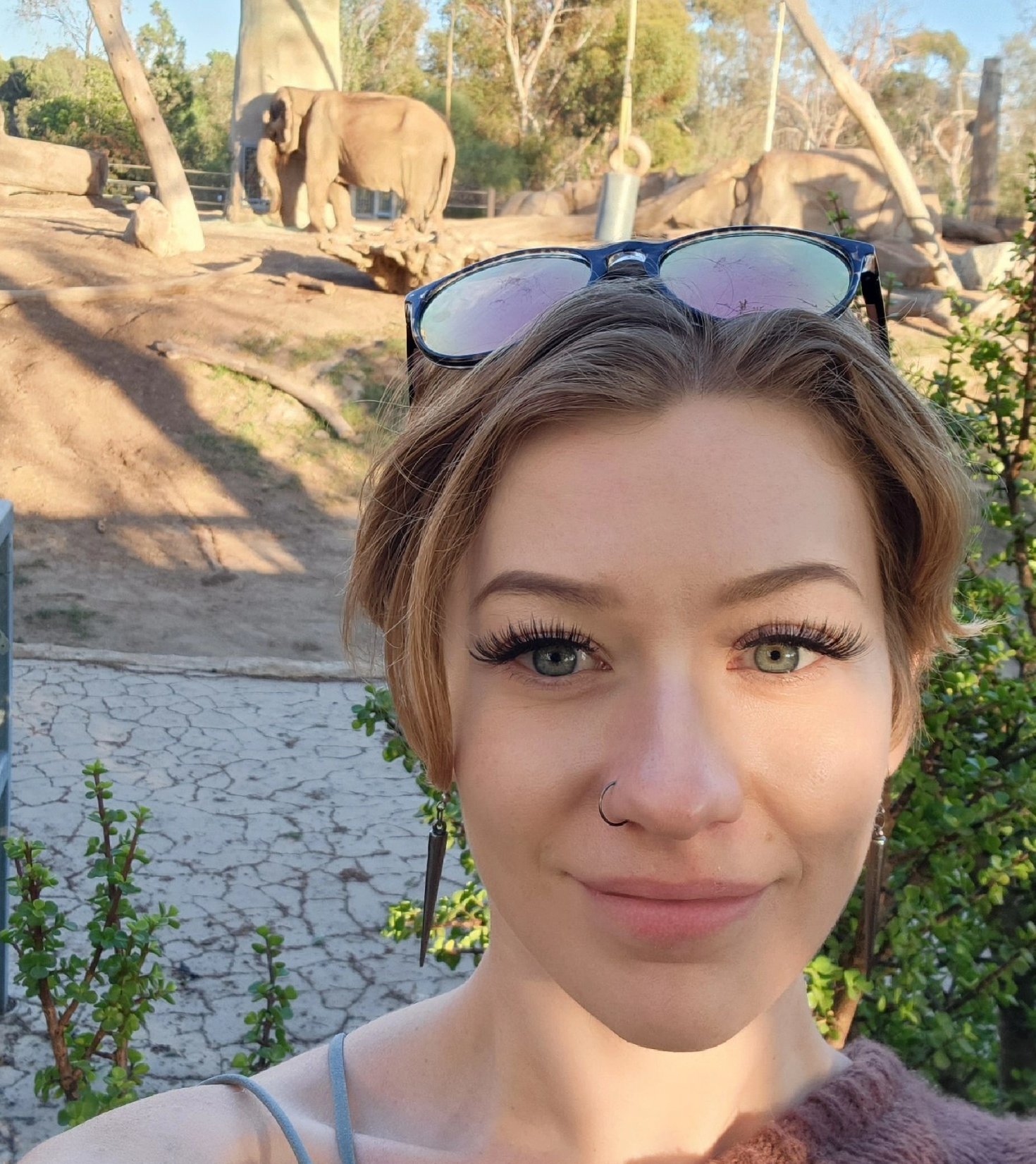









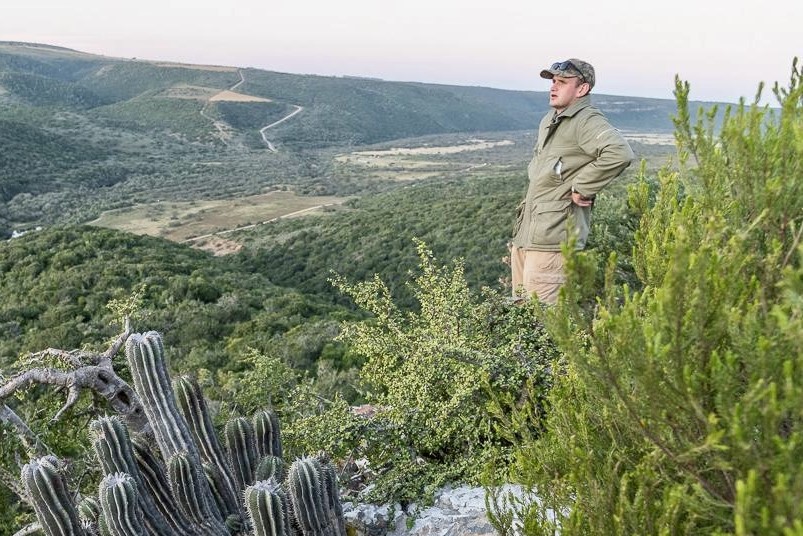

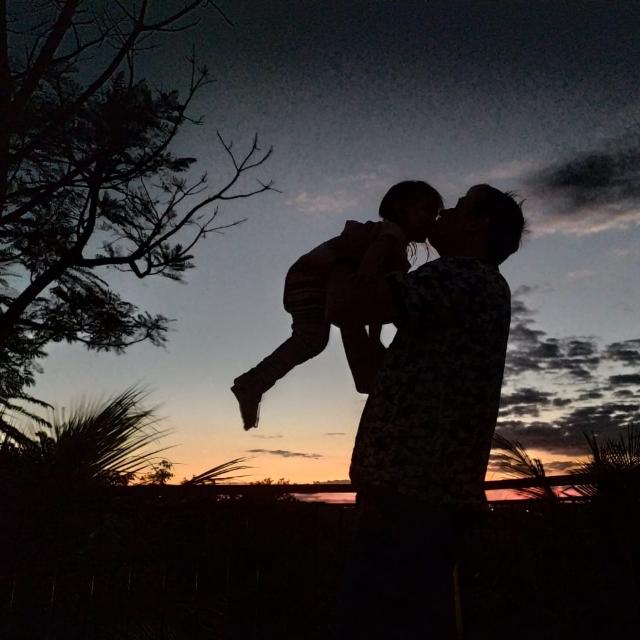

23 April 2025 8:08pm
Thank you Phil,
That sounds as if it might work (but probably with a turn trigger of around 45 degrees), and the baboon collar is well within the weight limit. Where can I find more details about the collar?
Peter